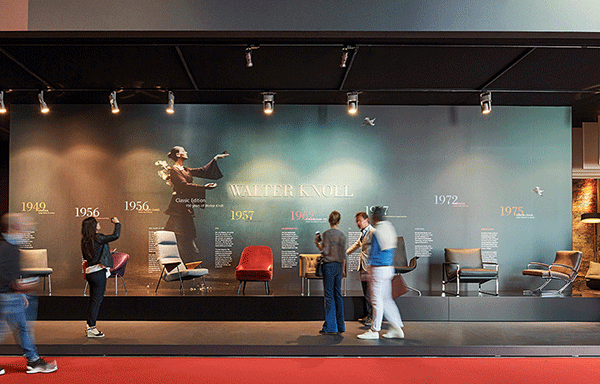DP Architects investigate aspects of Singapore’s heritage on the rapidly transforming tourism and residential island of Sentosa.

indesignlive.sg
February 7th, 2013
In Singapore, notions of heritage and national identity can be complex and challenging. On Sentosa island – itself a nexus of transformation and tourist attractions – a hotel has redefined itself with a nod to the past.

The Movenpick Heritage Hotel Sentosa (formerly the Treasure Resort Sentosa) offers a window to aspects of Singapore’s history via a play on elements of 1940s lifestyles.
The hotel is comprised of two wings. The first, which has just undergone redevelopment at the hands of DP Architects, occupies a pair of former barracks buildings. Constructed in 1940, they housed Southeast Asia’s first Malay artillery regiment. A clock tower was added in the 1990s.

This ‘heritage wing’ is connected by a triple-volume ‘galleria’ walk to a much newer block at the rear, which was designed by Japanese studio Superpotato.
An initial concept for the redevelopment of the heritage wing was proposed by Superpotato but not executed. Some elements of that concept filtered into the design by DP Architects, but spatial planning was thoroughly re-thought. In fact, so engaged was DP with the design, that the firm also took to providing consultation on branding.
The project’s lead architect, DP’s Senior Associate Director Jeremy Tan, likens the vision for the heritage wing (and galleria walk) to the experience of “coming home to your favourite aunt or uncle’s grand manor.” The idea was to build impressions of Singapore’s resort bungalows of the 1940s.

DP completed its work on the project in late 2012, and the hotel is yet to have its official relaunch. It already attracts business and leisure travellers, and draws a clientele of weekend ‘getaway’ guests from Singapore. While many aspects of the design should prove accessible to a general audience, some subtle nuances may be most easily digested by a local audience.
A combination of conserved components and modern interpretations builds DP’s narrative of the past. The galleria walk welcomes guests with its powerful spatial volume, lined by laser-cut panels of aluminium and fibre board that evoke a rice grain pattern, as well as motifs from the material cultures of Singapore’s primary population groups. An artificial green wall marks the point of connection with the contemporary wing.

The ground level of the heritage wing contains food and beverage spaces – the WOW Whisky Bar and Cigar Lounge and the Tablescape restaurant. A natural, raw palette of stone and timber is joined by plush upholstery, high-impact light fixtures and antique-inspired furniture.


The work of Japanese stone sculptor Kazutsugu Ogura features prominently. Decorative items such as cobblers’ chairs (for guests’ handbags), stacks of bowls and plants were sourced by DP. Tan describes the atmosphere as “bucolic”.

The premium rooms in the heritage wing are each identified by wall-hung shophouse roof tiles to which room numbers are attached. The idea of shophouse rafters is revisited inside the rooms. Bedrooms occupy what were once verandah spaces, and ventilation grilles above conserved double doors have been reinstated to allude to the former spatial arrangement. The grilles serve a visual rather than functional role.


The rooms have been populated with products from the region that hint at former lifestyles in Singapore. For example, patchwork and rag-rug inspired elements refer to the home-based cottage industries that were once active. The aesthetic of inherited, handed-down items can be detected, albeit in a high-end guise.

DP has worked on many conservation projects. Empress Place, Sun Yat Sen Memorial Hall, Masonic Hall, The Majestic Hotel, Wanderlust, The Fullerton Heritage (comprising Clifford Pier, Fullerton Bay Hotel and Customs House) and Hotel Fort Canning are but some.

The Movenpick Heritage Hotel Sentosa offers a vision of Singapore’s heritage that sits somewhat at odds with its dominant neighbour. The Merlion, an iconic national mascot, fiercely towers over the barracks buildings. Somehow, both versions of ‘identity’ seem at home on Sentosa.
Photos courtesy of Movenpick Heritage Hotel Sentosa.
DP Architects
dpa.com.sg
INDESIGN is on instagram
Follow @indesignlive
A searchable and comprehensive guide for specifying leading products and their suppliers
Keep up to date with the latest and greatest from our industry BFF's!

XTRA celebrates the distinctive and unexpected work of Magis in their Singapore showroom.

In design, the concept of absence is particularly powerful – it’s the abundant potential of deliberate non-presence that amplifies the impact of what is. And it is this realm of sophisticated subtraction that Gaggenau’s Dishwasher 400 Series so generously – and quietly – occupies.

Within the intimate confines of compact living, where space is at a premium, efficiency is critical and dining out often trumps home cooking, Gaggenau’s 400 Series Culinary Drawer proves that limited space can, in fact, unlock unlimited culinary possibilities.

Now at the ripe, bold age of 150, Walter Knoll is one of few design houses left who really understand what true design really is. And here’s why…

UK based designer Gonçalo Campos turned to his homeland’s major export to realise his latest piece, the Rolha Table
The internet never sleeps! Here's the stuff you might have missed

Making a difference and leading by design, Jefa Greenaway is honoured for his achievements by Swinburne University of Technology.

Mandi Keighran explores the streets of London’s Clerkenwell district to uncover the standout installations, product launches and moments from Clerkenwell Design Week 2025.